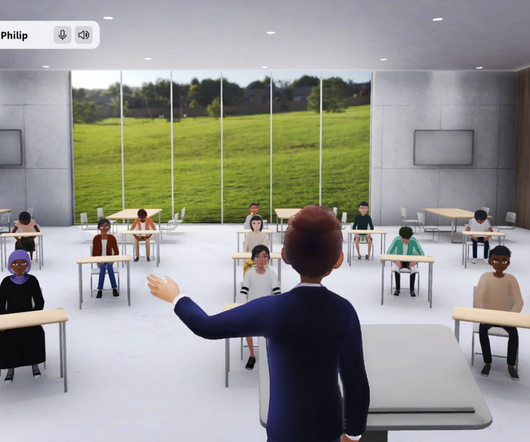Metaverse Education: What’s Next for Virtual Learning?
ViewSonic Education
NOVEMBER 28, 2022
In general, education in the metaverse relies on the use of avatars, digital representations of users, which students can use to interact with one another. Educators can also interact within these digital learning spaces using their own avatars, resulting in a classroom situation within a virtual learning environment.














Let's personalize your content